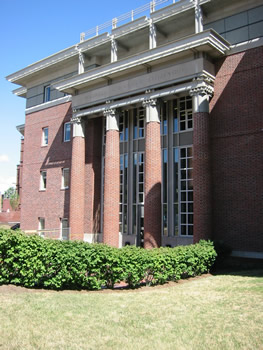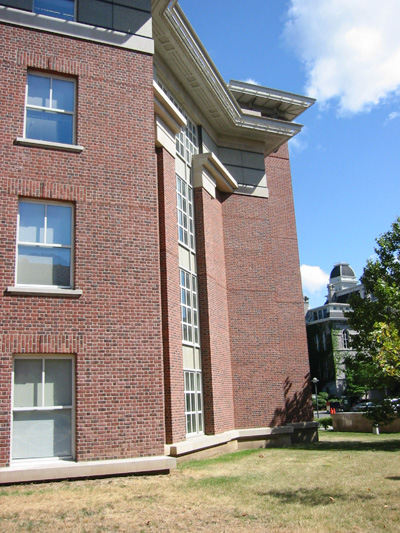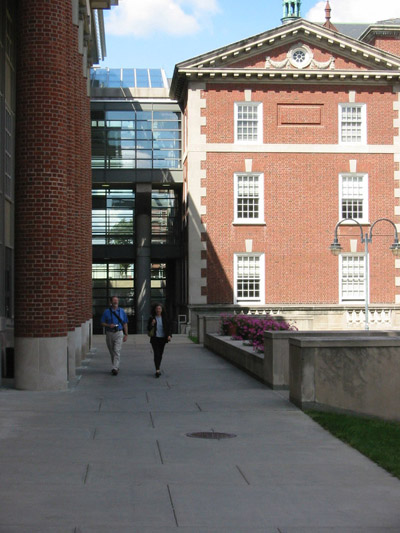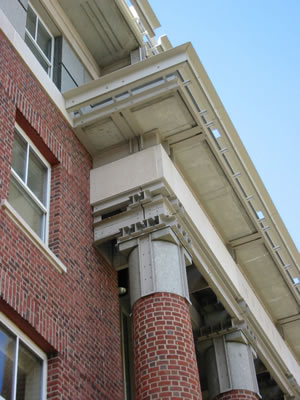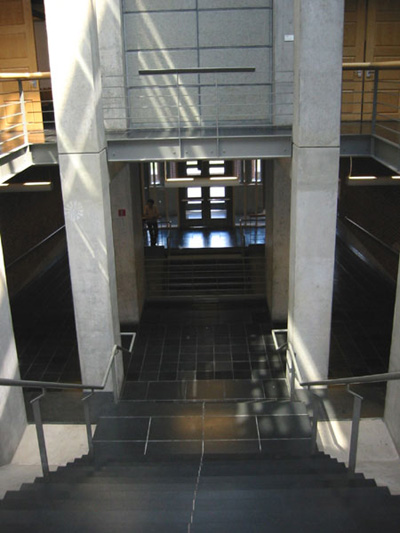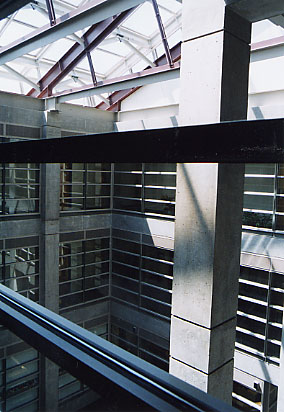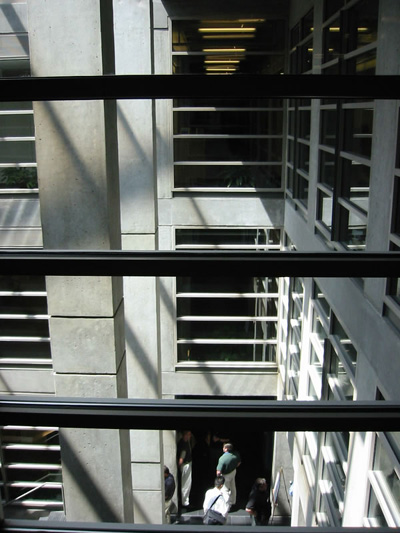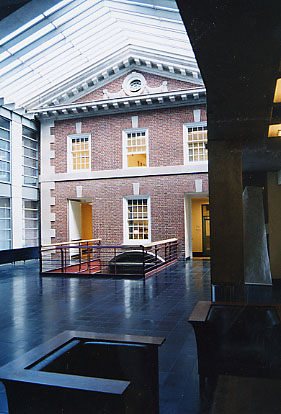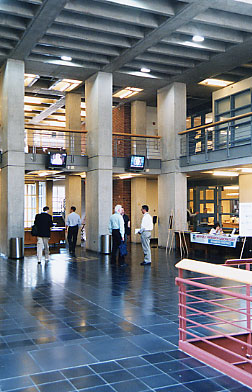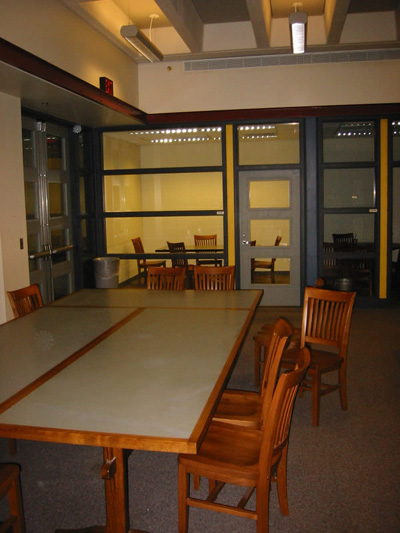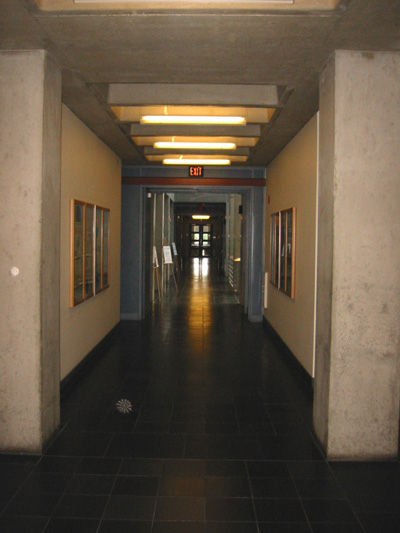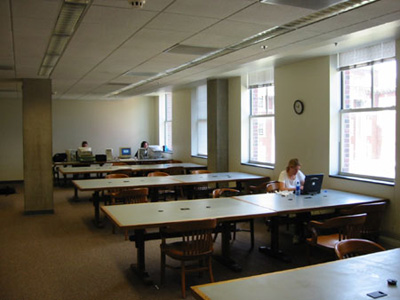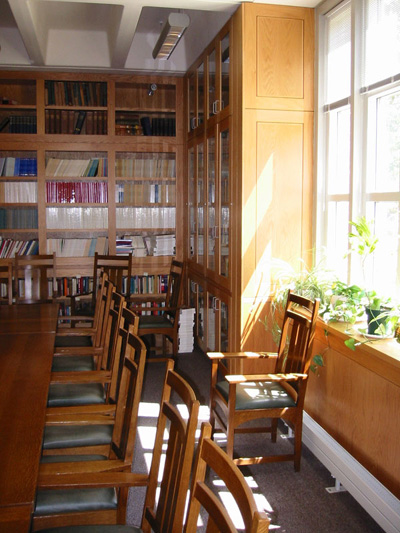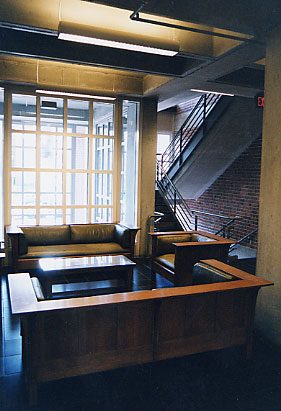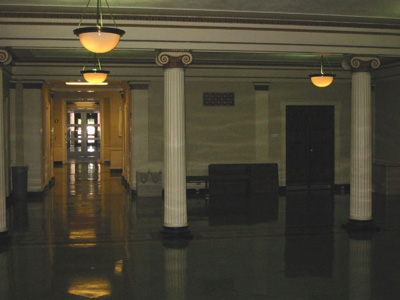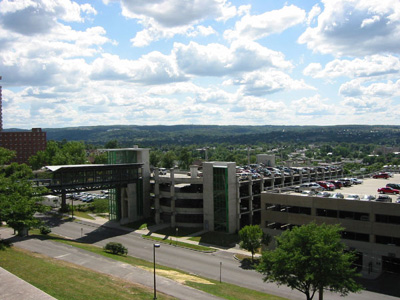| Eggars Hall has
several imposing entrances, each of which picks up architectural
features of Maxwell Hall, the original building, as well as subtle
elements of adjacent structures, including such things as window
mullions. |
|
|
|
|
| Here a corner of
the building has been angled to echo the shape of the Syracuse University
chapel out of the frame to the right. |
|
| The
steel and glass connector in the center of the image links Eggars
Hall to the Maxwell Bldg. Pedestrians are able to pass under the
connector. |
|
|
|
|
| An example of BCJ's
thoughtful exterior details, here above the columns flanking the
main entrance. |
|
| The principal doorway
opens onto a central stairwell that is also an atrium. |
|
|
|
|
| Although the stairwell
is unadorned, the structural elements are deployed to create visual
interest. The stairwell is noisy, however--not just because of the
hard, open space but because it is a key element of the climate-control
and ventilation system. The hum of air-handling fans was especially
noticeable here. |
|
| Another look at
the stairwell: an interesting play of light but a limited palette
of colors. |
|
|
|
|
| This lobby is part
of the connector between Eggars Hall and the Maxwell Bldg., whose
exterior has been incorporated into the space. |
|
| The same lobby
looking away from the Maxwell Bldg. |
|
|
|
|
A typical
seminar room.
|
| Typical hallway
in Eggars. Windows at the end of hallways help to offset the subterranean
feel. |
|
|
|
|
A student
study area.
|
| This is the nicest
meeting room in the building, thanks to a special donation to the
History department. |
|
|
|
|
The building
is furnished in Stickley, a local industry.
|
| The lobby of the
Maxwell Bldg., built by John Russell Pope in the 1930s. |
|
|
|
|
BCJ's
parking structure, not far from the Maxwell School.
|

